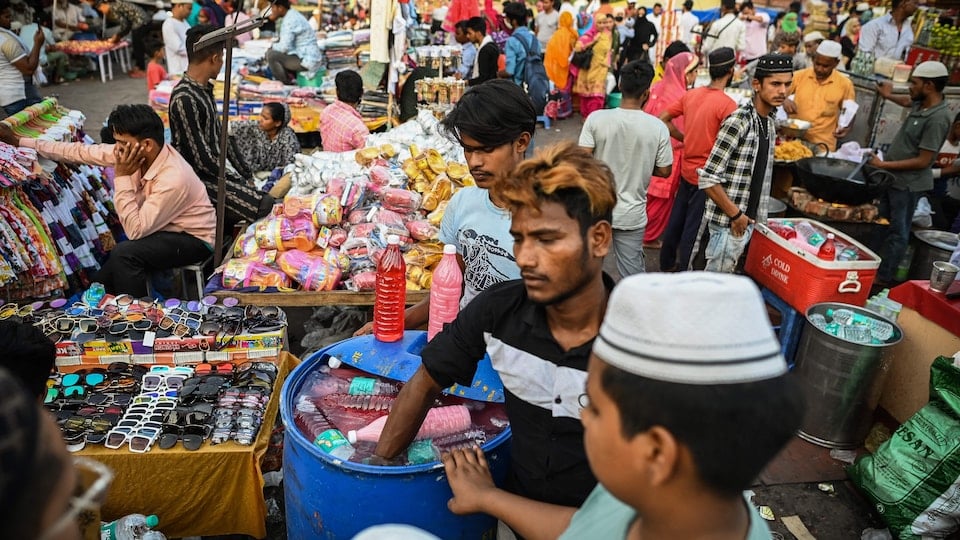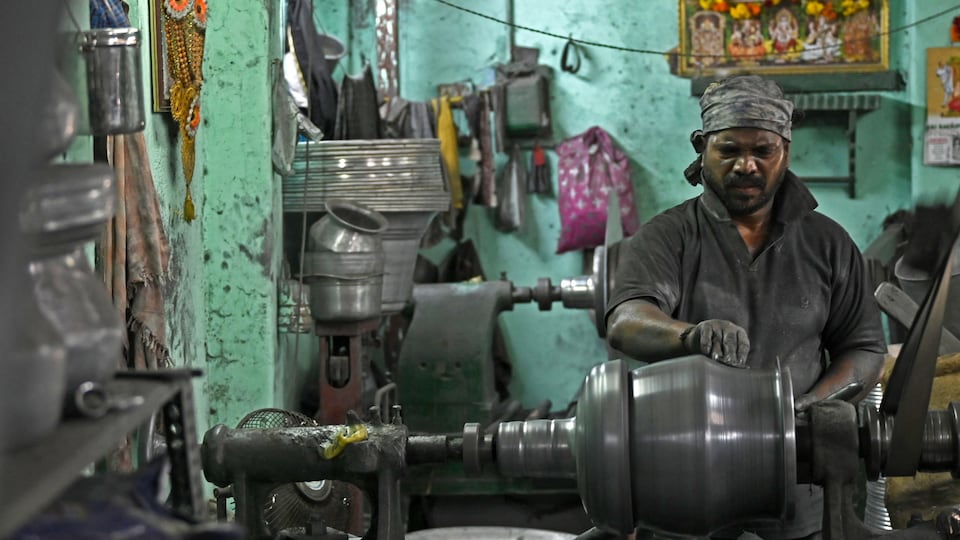Record temperatures of 35.9°C to 37.78°C were recorded in northwestern and central India, Mrutyunjay Mohapatra, director general of the meteorology department (IMD), told reporters.
These are the highest temperatures on record since the department began recording 122 years ago. And the heat is expected to continue into early May. The IMD predicts a gradual increase in maximum temperatures of 2-4°C over most parts of northwestern and central India this week, with little change thereafter.
India and Pakistan are experiencing exceptional heat waves this year, with peaks of 50°C in places.
The heat is driving a higher demand for electricity, leading to water shortages and blackouts in several states.
In India, coal reserves at power plants have indeed fallen by almost 17% since the beginning of April, falling to barely a third of the required levels.
Yesterday, the authorities estimated that there remained less than a day of coal
in stock at many power stations.
As a precaution, New Delhi has even canceled some passenger trains to speed up the delivery of coal to power plants, according to Bloomberg News.
The Chief Minister of New Dehli, Arvind Kejriwal, warned of possible cuts to hospitals and the capital’s metro, and spoke of a situation disastrous
for all over india
. The heat wave notably led to the closure of schools or the reduction of class hours in the state of Bihar.
The situation is hardly any better in Pakistan. Energy Minister Khurram Dastgir Khan says the country is going through an “energy crisis”. Several Pakistani towns suffered up to eight hours of power cuts a day last week, while rural areas suffered half-day outages.
Eastern India plagued by drought
The extreme heat is causing a drought of a rare scale in eastern India.
For two months, the state of Himachal Pradesh has not received a drop of water, while rain, hail and even snow normally fall at this time of year.
” Without rain for more than 57 days, Calcutta is in the grip of the longest drought of this millennium. »
As a result, hundreds of fires have reduced pine forests to ashes, especially around Dharamsala, the city where the Dalai Lama lives.
Most of these fires are ground fires that spread through pine forests, the most vulnerable to fires
State Forestry Chief Ajay Srivastava told AFP.
Fire crews are working hard to put out these fires and also to save wild animals
he added, specifying that the emergency services had to ask for help from the local residents.
Understanding and mitigating the impact of climate change
Heat waves are common in India, particularly in the central and northern parts of the country. They are usually felt in May and June, but they started earlier this year with high temperatures as early as March.
Naresh Kumar, senior scientist at theIMDattributes this intense and early heat wave to local atmospheric factors, in particular the presence of anticyclones (areas of high atmospheric pressure often associated with dry weather).
Other experts see a clear link between these heat events and climate change.
Roxy Mathew Koll, Indian Institute of Tropical Meteorology, agrees that local factors are playing a role in the heat wave afflicting the Indian subcontinent. According to him, the fact remains that climate change is the main cause
this kind of phenomenon
Dr. Chandni Singh, Principal Investigator at theIndian Institute for Human Settlements and lead author of the Intergovernmental Panel on Climate Change (IPCC), recalls that these impacts are not felt by everyone in the same way.The poor have fewer resources to cool off and fewer options for staying indoors, away from the heat
.
Many rural children go to school in tin-roofed sheds, which would be unbearable in the heat
she illustrates.
Since 2015, the Indian government and state governments have enacted a number of measures to mitigate the effects of heat waves, such as a ban on working outdoors during the hottest hours.
But these measures can only be fully effective if they are accompanied by far-reaching changes, such as building greener infrastructure, Singh said.
Our buildings are constructed in such a way that they trap heat instead of providing ventilation. There are so many innovations at the international level that we can learn from
she says.
We’re doing some things well, but it’s time to up our game – because we have to live with the heat.
With information from AFP, Reuters and the BBC
Reference-ici.radio-canada.ca

